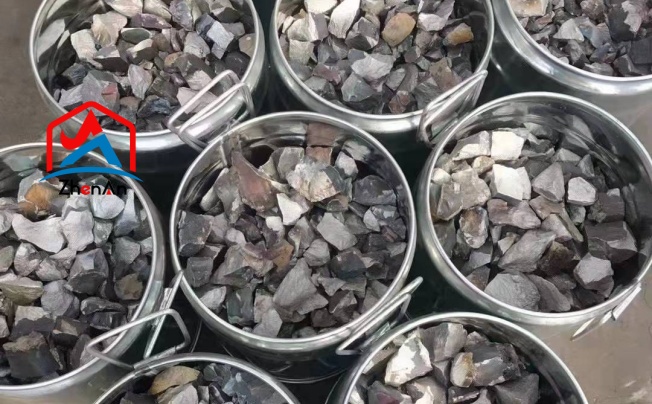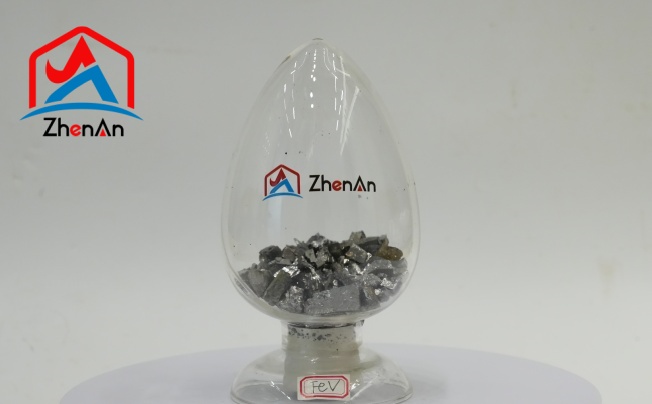What is Ferro Silicon Powder?
Iron and silicon combine to form ferrosilicon powder, which has a grey-black colour. It is created by reducing sand or silica in the presence of iron using coke. Ferrosilicon powder typically contains 15% to 90% silicon, with the remaining components being iron and other elements like calcium and aluminium. Depending on the brand and grade, ingredients may change.
Ferrosilicon powder finds extensive use across various sectors. Production of steel, ferroalloys, metallurgy, semiconductors, etc. is a few typical uses.
What are the functions of ferrosilicon powder?
Ferrosilicon powder Iron and silicon are combined to create an iron alloy, which is then ground into a powder and used as a deoxidizer in the production of iron and steel.
Function 1: Ferrosilicon powder is frequently employed as an alloying and deoxidizing agent
Deoxidation must be done at a later stage of the steelmaking process to guarantee the quality of the steel and obtain qualified steel with a chemical composition. Due to its high chemical affinity for oxygen, ferrosilicon powder is employed in precipitation and diffusion deoxidization processes in the steel industry as a potent deoxidizer.
Function 2: When making ferroalloys, ferrosilicon powder can be employed as a reducing agent
Ferrosilicon powder has a low carbon content in high-silicon ferrosilicon powder and a significant chemical affinity for oxygen during the ferroalloy synthesis process. Thus, in the ferroalloy business, high-silicon ferrosilicon powder is a frequently utilized reducing agent in the manufacturing of low-carbon ferroalloys.
Function 3: In the cast iron industry, ferrosilicon powder is frequently employed as a modularizing agent and inoculant
An essential metal component of contemporary industry is cast iron. In comparison to steel, it is less expensive, easier to melt and heat, has superior casting qualities, and is far more seismically resistant. Specifically, the mechanical qualities of ductile iron are comparable to or higher than those of steel. A certain quantity of ferrosilicon powder added to cast iron can help precipitate and spheroidize graphite while preventing carbides from forming in the iron. Ferrosilicon is hence a crucial nodularizing and inoculant in the ductile iron production process.
Introduction and functions of atomized ferrosilicon powder
1. Ferrosilicon powder is atomized using the water atomization technique to create spherical particles of this type. The finer particle size makes ferrosilicon powder more appropriate for use in welding and other processes when compared to regular ground ferrosilicon powder. Ferrosilicon powder that has been atomized is typically used as a deoxidizer in welding and as an auxiliary material for welding coatings. It’s an easily ionised material. It mostly uses calcium, sodium, and potassium compounds, such as feldspar, chalk, potassium carbonate, water glass, etc., which can enhance arc combustion stability and facilitate arc ignition.
2. One of the coating’s ingredients is atomized ferrosilicon powder, which is mostly utilized in the welding industry. One essential component in the welding industry is the welding rod. It is mostly made up of a coating and a welding core. An uncoated welding rod is not only difficult to use, but it also cannot deliver good welding results. Ferrosilicon that has undergone a water atomization procedure and has a silicon concentration of roughly 45% is often used to create atomized ferrosilicon powder. Ferrosilicon powder that has been atomized can be added to help enhance electrode deoxidation and lower oxygen levels during welding. meddling.
3. Ferrosilicon powder that has been atomized is typically used as a deoxidizer in welding and as an auxiliary material for welding coatings. The welding of metals is commonly referred to as welding. This sort of formation creates an interatomic bonding force between two dissimilar things by applying pressure, heating, or both at the same time. Airborne oxygen, nitrogen, and water vapour seep into the weld during the welding process, negatively impacting the weld. It not only creates pores but also weakens the weld’s mechanical qualities and maybe breaks the material. The arc and molten pool are covered with a huge volume of gas created as the electrode coating melts, which will lessen the interaction between the molten metal and the air.







